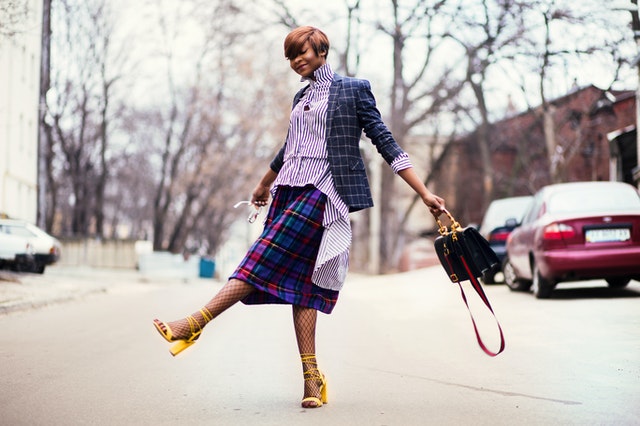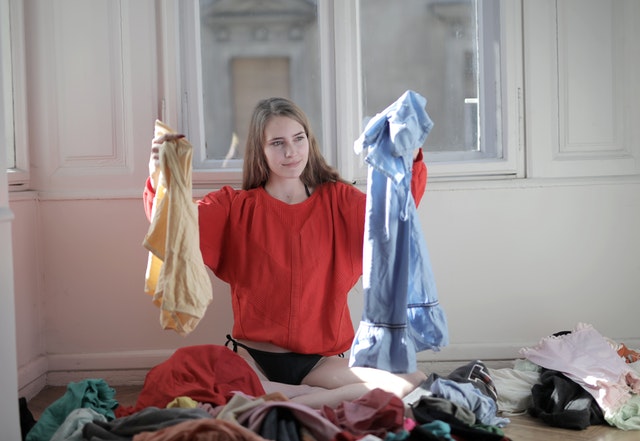
Written by Jennifer Hahn Masterson, Guest Writer
Most people believe that environmentally friendly products are way too expensive. As sustainability becomes the hot trend and many self-proclaimed responsible brands with enormous price tags fill up our screens, being eco-conscious seems in danger of becoming just another must-have accessory nobody can’t afford.
Unfortunately, we can’t afford not to have one as the fashion industry accounts for a whopping 10% of all greenhouse gas emissions and with evident impacts of global climate change, it’s clear that our planet can no longer support our fast fashion habits. Here are some suggestions on how you can balance your personal finances with nature’s friendly sustainable fashion.
Use what you have
Research shows that 30% of our clothes carbon footprint originates from washing and caring for them. So, clearly, sustainability begins at your home and it refers mostly to using and taking care of what we already have.
According to a master’s degree in fashion creative direction, a brand is not only defined by its visual content but also holds emotional value. This comes into play here when you can breathe new life into your old, beloved garments. So, take out your needles and pins and mend or upcycle your existing clothes, or if that’s out of your skills’ scope, find local tailors who can do it for you. In the meantime, skip using the tumble dryer and wash your clothes less frequently. Finally, as the most environmentally-friendly tactics, line dry your clothes outside whenever possible.
Shop secondhand
When you take other people’s cast-offs, you give them a new lease of life and you reduce your own desire for new stuff, which is one of the most sustainable things anyone can do. On top of that, it’s quite a cheap way to get new clothes. Think of it in this way – before you rush to buy something new, try to find a preloved item first. The possibility is high you’ll stumble upon something unique that blows you away completely unexpectedly!

Resale is hot
When you finally lose the stigma of a hand-me-down wardrobe, it gets much easier to buy high-quality brands at a fraction of their cost. Through several dedicated consignment sites, you can both buy clothes or sell your own garments you no longer want, keep them in circulation and earn a bit of profit as well.
As this online course in the creative process in fashion design is teaching us, an important part of designing a brand is knowing how to display your creativity and communicate your brand image. So, get your creative juices going and come up with an imaginative way of transmitting your vision of fashion through the garments you want to sell.
Swap, don’t shop
Go back in time and remember your teen years when you could get a “brand new” outfit just by ransacking your best friend’s wardrobe. Well, those good old days are hot again – clothes-swapping is still among the most sustainable ways to get a style overhaul and these days, technology is making it even easier and more widespread. With apps such as Nuw app, you can upload your own items and earn credits for them that you can use later on “buying” other people’s unwanted items. Your only cost is postage.

Borrow & return
Once upon a time clothes hire was only reserved for occasion wear meaning tailcoats and ball gowns for gala events. Fortunately, the new generation of rental services is focused on sustainability and wearability, providing eco-friendly cleaning and low-carbon couriers. At many places, you’ll find very fancy and very pricey ethical brands available to borrow for just a few bucks a day! This means you don’t have to splurge on a glamorous outfit that you’ll only wear once – now, you can enjoy the excitement of new haute couture without the commitment or breaking your bank!
Shop small & local
A classic rule of sustainability is shopping locally and at smaller brands, as they’re almost always more sustainable than large companies that launch thousands of garments each week. Plus, even the smallest operations can be quite affordable as well, since they don’t have large overhead costs or marketing budgets.
The Internet is full of individual clothes makers selling made-to-order, customized, size-inclusive designs for often just a bit more and sometimes even less than high street prices. Look out for those producers that upcycle classic or vintage pieces into something brand new or use deadstock fabric which is the unused ends-of-rolls tossed away by other brands.
There are many things you can try to dress sustainably and if it feels hard at times, don’t beat yourself up! Just make sure you love and look after your wardrobe, and wear it as long as you can. Just by extending the lifespan of your clothes you can reduce their carbon footprint by 50%, so that means that almost anything you wear can become sustainable if you commit to it.
About the Author
Jennifer Hahn Masterson is a lifestyle blogger and senior content strategist at Spread the Word Solutions, having a keen interest in a wide array of topics related health, design, fashion and travels. In her leisure time, she likes to immerse herself in a good book and try to satisfy her perpetual wanderlust. You can check her out on LinkedInand Twitter.






Leave a reply